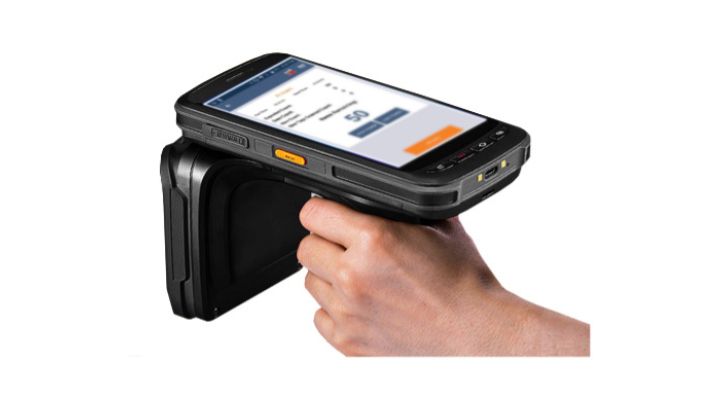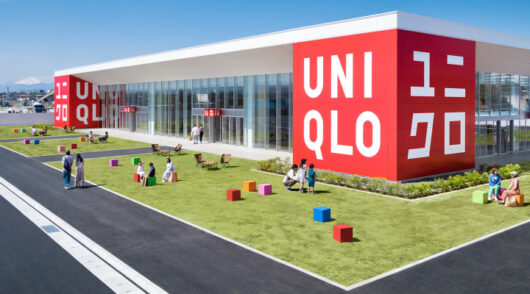RFID is the retail sector’s new secret weapon, helping retailers to grow sales, cut labour costs, reduce loss and grow their profit margins, by undertaking instant on-demand stocktakes and reinforcing product security. It also enhances the customer experience by improving visibility into inventory levels enabling salespeople to solve customer product queries on the spot.
RFID tags are smart barcode labels that can digitally store product information, readable by scanners in-store and throughout the supply chain – from the factory to the warehouse to the retail store. They enable accurate inventory levels by location and improved management of a retailer’s inventory.
In-store, they can determine the on-shelf availability of a product, allow staff to find misplaced stock, and make it easy for staff to undertake stocktaking, which can be completed 25 to 30 times faster by replacing manual counting with RFID scanning. Then technology allows stocktakes to be carried out weekly or fortnightly and produce far more accurate results.
“By having better insights, there are not just financial advantages but there is also a social benefit from getting your ordering more accurate, thus reducing waste in your inventory from over-ordering,” explains Peter Reinke, CEO at Ramp, an Australian-owned and operated specialist in providing RFID solutions.
“The return on investment for introducing RFID across stores starts to manifest from day one. Stock loss is immediately reduced, and gains are seen virtually straight away.
“RFID is the killer app in the business to enable visibility of your stock.”
Reinke says while some high-profile Australian retail brands are ramping up the rollout of RFID tags, the highest level of adoption is being seen across the small to medium size brands where their staff can more easily meet the demands of omnichannel retailing.
“Where it may have taken one person to do a store stocktake in three days, it is now being done in under an hour,” Reinke says.
“In the US, RFID is everywhere. In fact, many companies, require suppliers to add RFID tags to all products they receive, so when the products arrive in stores, they are already tagged at the point of manufacture.”
While smaller retailers in Australia may not carry as much clout as their overseas counterparts, they are already starting to see the benefits that RFID provides. In some cases, it is improving profit margins by up to 10 per cent. That is a huge number in retail. Retailers really need to start pushing hard to ensure the products are tagged at the point of manufacture, rather than in-store or at the DC. This would help to grow profit margins even further and makes the retailer’s job far easier as well as improve inventory accuracy throughout the supply chain.
The early adoption of RFID in Australia was spearheaded by global businesses such as Zara, Lululemon, Decathlon and Uniqlo. City Chic was Australia’s first retail brand to adopt RFID across its entire range, and that was driven by Macy’s mandating it as a condition of ranging City Chic’s products in the US.
“Australian retailers need to move more quickly on the RFID front now that the pandemic is coming to an end. While there is less than a handful of solution providers here, Ramp is the only provider that is Australian-owned and operated,” Reinke emphasises.
“The desire for transformation has grown in response to Covid and changes in buyer behaviour. I see this accelerating as more retailers adjust to post-pandemic conditions and boards and their executives look for ways to operate efficiently in an omnichannel world and energise profits.”
While the apparel sector is leading the adoption of RFID tags in Australia, Ramp is now seeing traction in the personal care sector, sporting goods, accessories, eyewear, and – more recently – liquor and furniture stores.
A “major transformation” – but it pays off
Reinke says retailers need to know that if they take on an RFID project they are signing up for a ‘transformation’ that will cut costs, enhance the customer experience and grow profits.
“Sounds strange to cut costs and enhance the customer experience, but this is exactly what RFID does. It helps grows the sales, virtually eliminates loss and improves customer outcomes,” he said.
“Ramp works closely with the retailers to help implement RFID as there is some planning involved to manage products at source, in stores and in warehouses. All these items need to be tagged up and we assist with the transformation to support the adoption of the new tech.

“In fact, we recently helped luxury fashion retailer, Parlour X implement RFID across the business, and they were up and running in as little as three days. They are already enjoying the benefits of the new technology.”
Reinke has worked in retail for many years and recalls hand-pricing stock at Rebel Sport stores when they first opened in Australia and remembers the transformation from using sticker guns to applying barcode labels.
“Seems like a lifetime ago,” he says.
“Retailers have made this leap before and RFID is the next leap with far improved benefits. Thankfully, retailers have access to RFID which offers far more than barcodes.”
RFID tags come at prices ranging from less than 10 cents and this is dependent on the item being tagged.
Reinke says retailers in Australia understand the importance of better management of stock which is more challenging now when managing both online and bricks and mortar environments.
“Whether you are operating online or in physical stores, the new tech will support improved inventory management across the board,” Reinke adds.
“Retailers that adopt RFID also state that not only are they able to offer a better customer experience, they also are able to use much more up-to-date accurate inventory information to reduce the amount of working capital they have tied up in stock.
“It helps to ensure that just the right amount of stock is ordered as needed and that products can be sold to customers when they want it. RFID essentially eliminates lost sales opportunities, which is very important in retail.
“Many leading retailers are talking about retail 3.0 and RFID is mandatory to make that happen. If they are slow to adopt it, they risk not being able to change their business model to adapt to changed buying behaviour as well as other market forces related to wastage, sustainability and traceability.
“As I have said, implementing RFID solutions is a fairly easy process with the right partner. There are people who can help out along the way, not just from an implementation perspective, but in the support, as well. There is a lot of expertise now in the market to help people take on the journey. Not just Ramp, but other companies as well who know how to implement it. So, it is not like a few years ago when we were the first cab off the rank.”
Mature RFID systems are integrated with other retail technologies, such as store POS or ERP systems, which can make it faster to get it up and running.
Reinke is excited about the growing take-up of RFID systems driven primarily by tech-savvy businesses and buyer behaviour changes since Covid – especially as local retail groups take note of progress in overseas markets.
He warns any business that has not started planning for RFID needs to get moving as they may now face extended delays due to global RFID chip shortages and a ‘massive global increase in demand’ from businesses like Nike and Walmart.
“The future market outlook involves rising costs. RFID is deflationary and helps businesses to cut costs. It really is the only way forward if retailers want to grow their bottom line and avoid underselling stock where they lack visibility,” he adds.
“The results are well worth it.”






